That Venice is one of the most famous cities in the world is not a big revelation. Everyone knows, dreams and plans a visit there at least once in a lifetime. Nevertheless, what is less well known are all the dainty locations one can find just outside the city. The real discovery is spotting the endless golden countryside, the wooded mountains, the glamourous beaches and the cities teem with culture and history. One of these is the city of Padua. At only half an hour train from Venice, this little town offers the opportunity to spend a delightful day trip among artistic masterpieces, fancy aperitifs and academic vibes.
If in a weekly sojourn in Venice, set a day aside, catch the train and go sightseeing Padua and its peculiar attractions.
The Arena Gardens
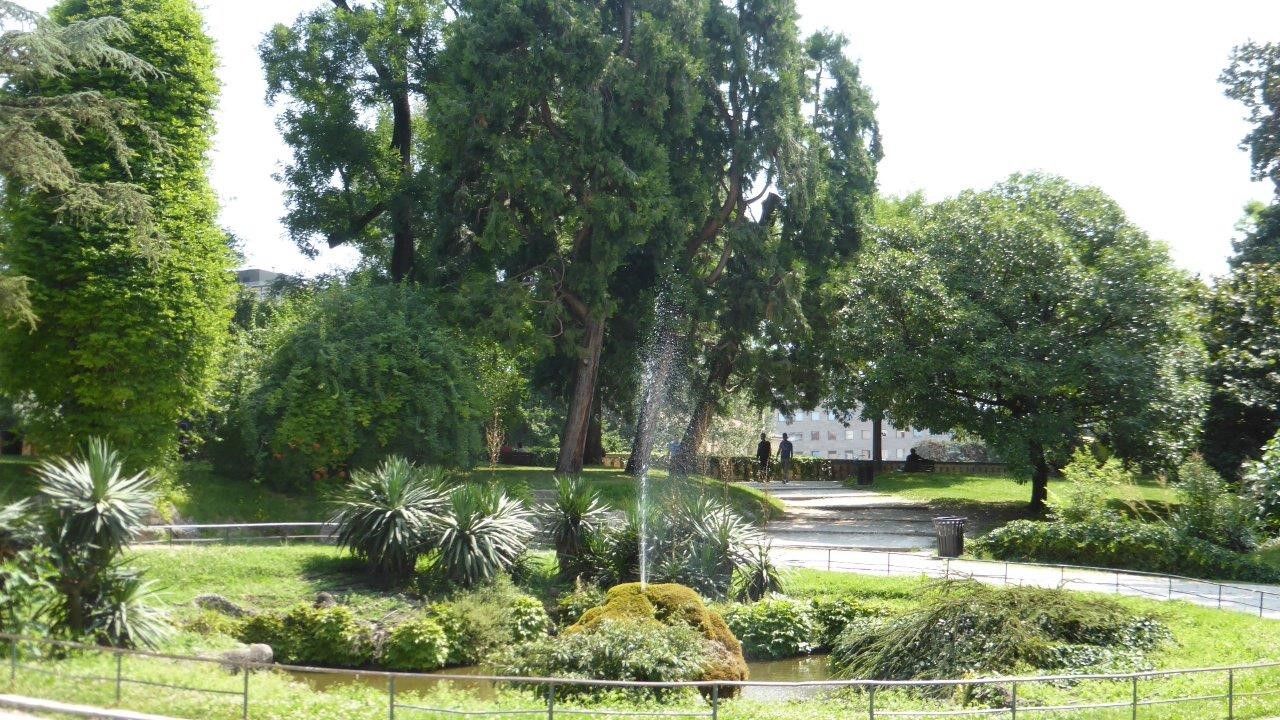
A view of the Arena Gardens
The first activity to perform, once in the city, is a walk into the Arena Gardens, a perfect example of city’s green park. This area is a green shelter exactly in the hub of the metropolitan city, where it is possible to breath some fresh air and have a break from the frenzy of the city life. Walking on the pedestrian path, it is possible to enjoy the relaxing vibes generate by the perfect combination of plants, flowers, rocks and water. Here you can have a snack from the park’s kiosk and lie down on a deck chair, relaxing in the sun. If you close your eyes, you will sense to be far away from the city of more than 200 thousand inhabitants, in a more peaceful natural paradise. Once you open your eyes again, you can glimpse the remaining of the ancient Arena Theatre build by the Romans around 70 D.C. and hear, at the same time, the lapping of the water against the boats sailing the river Bacchiglione, on the other side of the park.
The Scrovegni’s Chapel
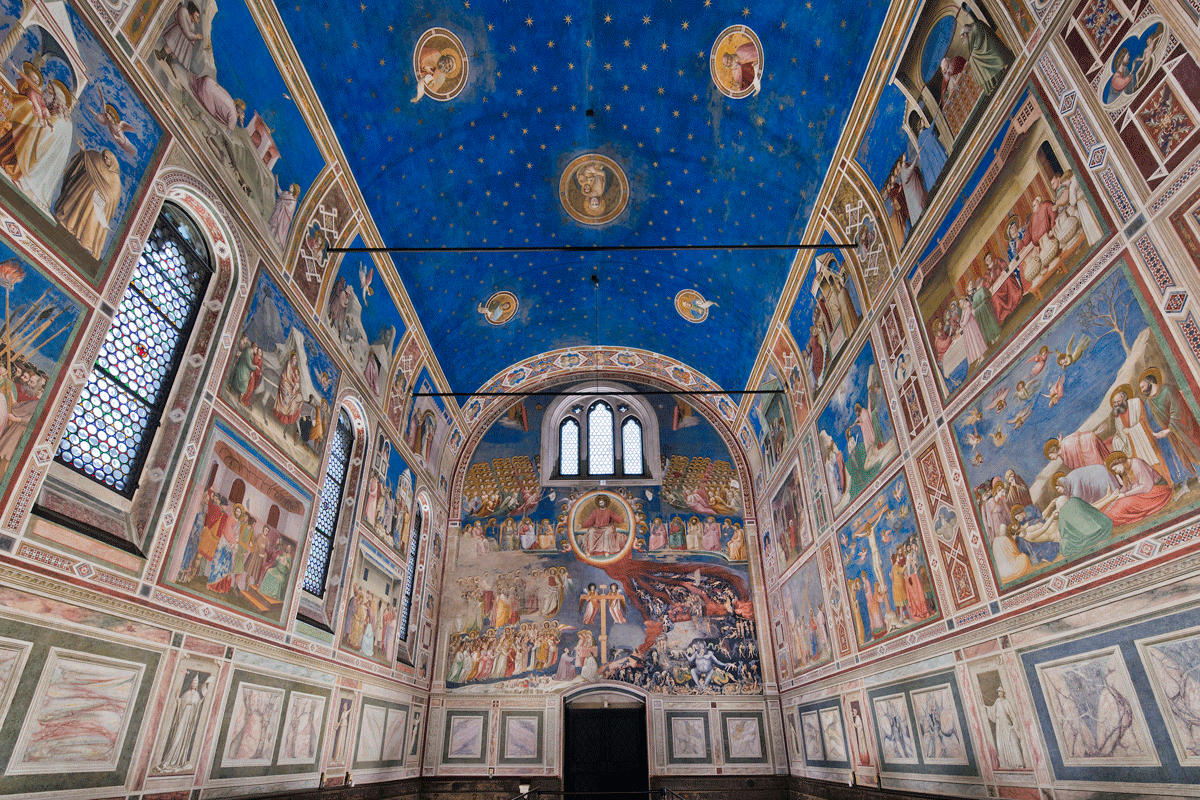
The interior of the Scrovegni's Chapel
A jewel of art history is hidden in the park, the Scrovegni’s Chapel. The stunning chapel containing Giotto’s masterpiece is definitely worth a visit. The little chantry is dedicated to Saint Mary of the Charity upon the will of its owner, the patron Enrico degli Scrovegni. The great master Giotto, the father of the Italian Renaissance Art, frescoed the all the walls of the little chantry from 1303 to 1305, with scenes of Saint Mary and Christ’s narrative, the Last Judgment, the marvellous cycle of Good and Bad Administration and a suggestive night sky on the chapel’s ceiling.
This is not only a picturesque building, yet it is the symbol of a paramount step forward of the art history. Giotto, using the innovative element of perspective, managed to give a sense of unity throughout the entire building. Each fresco is arranged according to a two-point perspective plan, generating a cohesive and unified vision. Moreover, Giotto brought about another truly innovative element in his work: the psychological intensity of the characters. All the figures express their human feelings, appearing realistic and touching. In brief, Giotto, for the first time in the history of Medieval art introduced drama. If you are in Padua, this Chapel is a must to visit.
The Café without doors and the Museum of Risorgimento and Contemporary Age
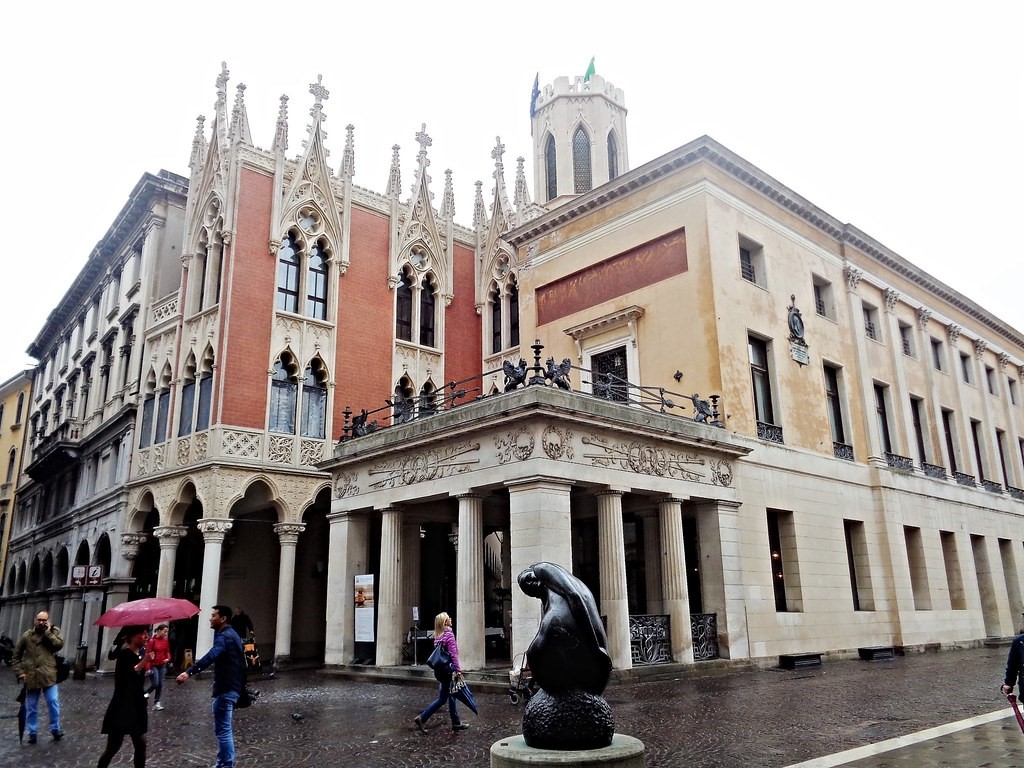
The rear facade of the Café without doors
Once in the hub of the city center, the lively bustle of its citizens immediately wraps you up. There are bicycles running on the medieval paths, university students rushing to attend their next lectures, busy workers entering stately building and groups of friends relaxing at the many bars’ tables, which pack the city. This is the perfect time to admire the architecture of the famous “Café without doors”. The name recalls ancient times when the Café was always open, both during the day and at night, in order to let anyone in anytime they fancy it. This unusual peculiarity vanished in 1916, when the night opening was suspended due to the First World War. Indeed, the lights of the Café had to be rigorously off during the dark hours, to protect Padua from the bombardments of the enemies. The building’s architecture, redesigned in its current shape during the 19th century by the architect Giuseppe Jappelli, is really interesting. He managed to blend together the polished neoclassical style with the audacious Venetian gothic, giving birth to a truly eclectic venue. Here, the rhythm of its facades and the monochromatic richness of its interior tapestries tell stories of turmoil and intellectual rendezvous enlivening this Café for decades. This happened especially during the Risorgimento, when professors and students of the University nearby would meet up to arrange the uprisings against the Austro – Hungarian Empire. If interested in those events, here it is possible to visit the Museum of Risorgimento and Contemporary Age, close to the second floor of the Café. Its exhibition shows one and a half century of national and local history, from 1797, year of the fall of the Venetian Republic, to 1948, when the Italian Constitution entered into force.
The Palazzo del Bo
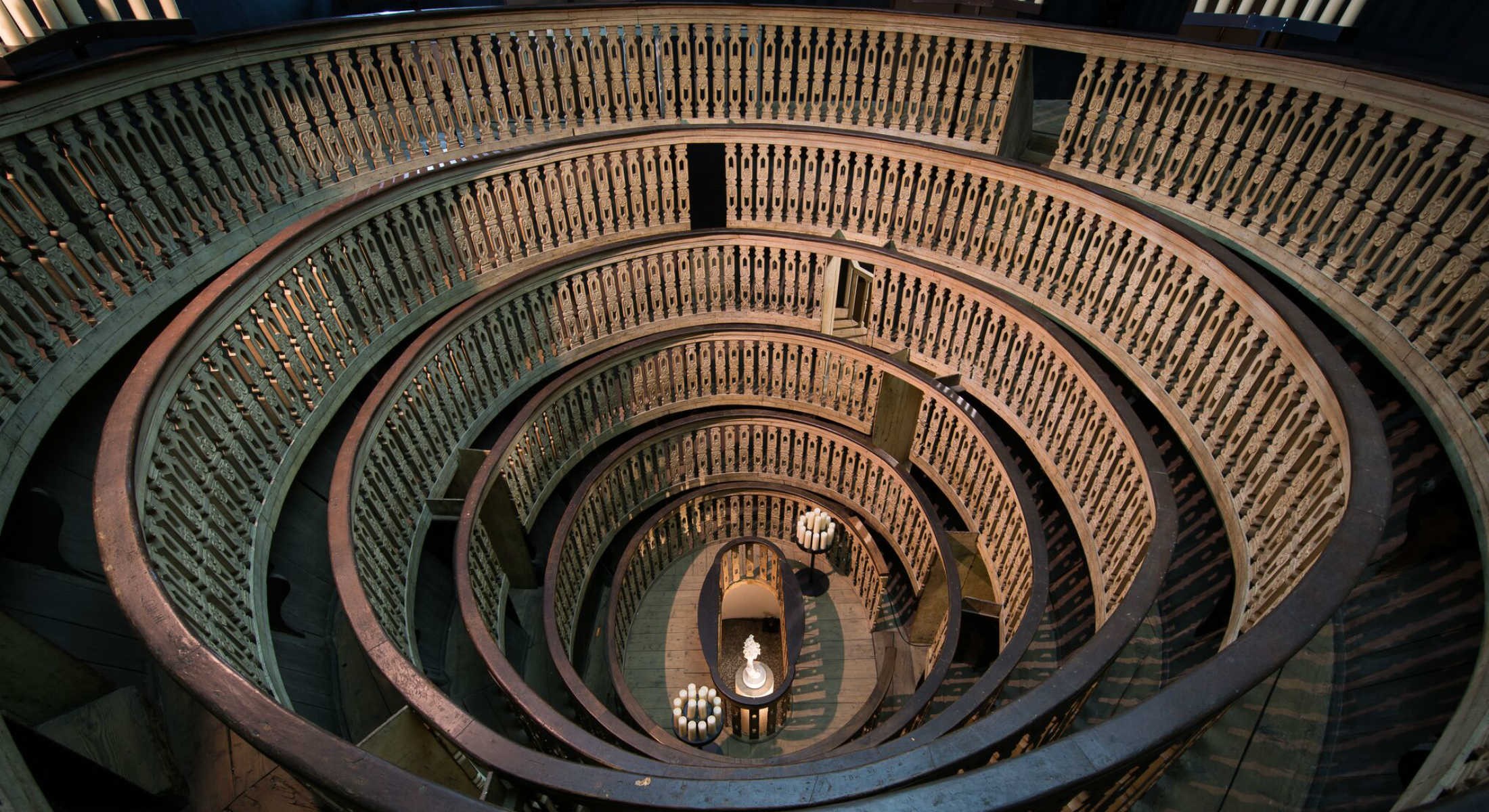
Anatomic Theatre of Palazzo del Bo
Facing the same elegant street, stands out the symbol of an institution of great pride for the city, the Palazzo del Bo, the historical seat of University of Padua from 1493. Yet, the history of this university dates back of almost 300 years. It is, indeed, founded in 1222, resulting the second eldest university in Italy. It obtained its high prestigious thanks to the contributions of its students and professors, among them figures such as Galileo and Copernic, and it is taken into great consideration still today, since lots of students from all over the world gather in Padua in order to live a proper academic experience. The visit of Palazzo del Bo helps grasp some vibes of the academic environments. The lectures, the conferences and the most ancient anatomic theatre of the world, welcoming you with a sign stating “Mors ubi gaudet succurrere Vitae”, the Latin sentence for “This is the venue where death rejoices for helping the life”, recall the importance of education and the magic of academic institutions.
Via Roma Shopping Street
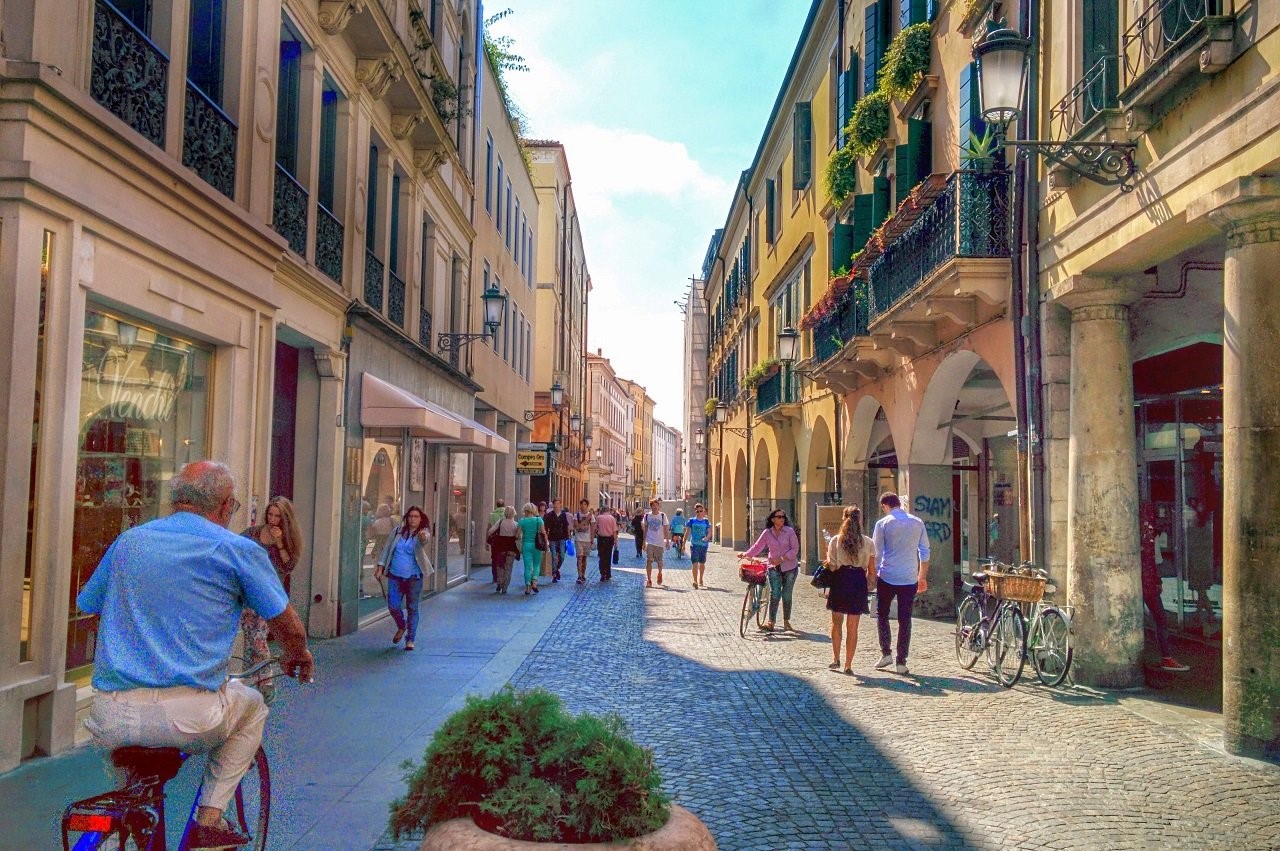
Via Roma Shopping street
After this bath into the culture, it is time to engage in more frivolous activities like strolling Via Roma Shopping Street, swinging the head around at each step, getting lured by the countless shopping windows with fancy garments, or by the aroma of some food delicacies. This street ultimately merges with another street, Via Umberto I, yet, without changing its fashionable vibes. People at dining tables on the cobblestone path, savouring an ice-cream on the ornamental porch of Santa Maria dei Servi Church or just passing alongside the noble buildings overlooking the street, create the perfect atmosphere to pick a cuisine and stop by for lunch.
The Prato della Valle
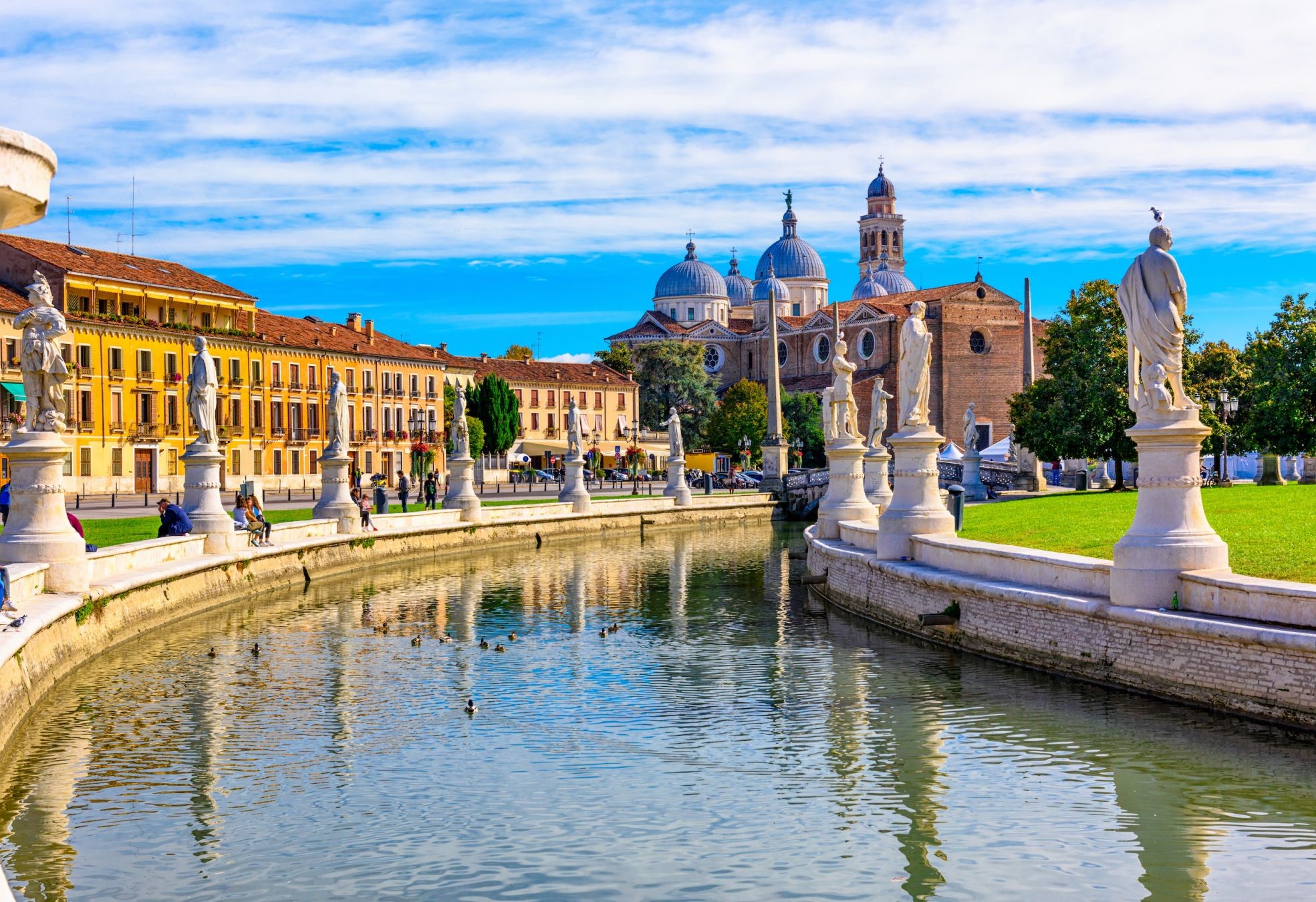
A glimpse of Prato della Valle
Another surprise awaits behind the corner, at the end of the walk, indeed, you come across one of the largest squares in Europe, Prato della Valle. With its 90,000 square meter, it is an elliptical square enclosed by an artificial canal. The canal is bordered by two rings of, in total, 78 white statues representing eminent protagonists of Padua’s historical events and it protects a green island with a big fountain in the centre. The Island is called Memmia in honour of the politician Andrea Memmo, who started the renovation of the square in 1775. Today, this is a truly lively spot. According to the locals’ opinion, the so called “Il Prato” is seen more as an urban park than a square. Indeed, as soon as the days get warmer after the winter, here you can spot young students sunbathing, studying, playing music with friends and relaxing on the shades of the island’s trees. Nevertheless, it still holds also its traditional duty of being the venue for trades and entertainment. In fact, the square hosts concerts, festivals, shows and it turns into an open-air market every Saturday.
The Basilica of Saint Anthony of Padua

View of The Basilica of Saint Anthony of Padua from Prato della Valle
From Prato della Valle it is possible to glimpse the cupolas of another paramount landmark of Padua, the Basilica of Saint Anthony of Padua, or in slang, just “Il Santo”. Pilgrims from all over the world come every year to pay homage to the Saint, whose remains are guarded in a gold reliquary in one of the chapels. Either for religious or for artistic interests, the church is a must-visit due to its peculiar shape. The Construction of the Basilica begun immediately after the death of its Saint, so in 1232. The imposing building blends influences of several different art movements. The main project of Il Santo refers to the Romanesque Basilica of Saint Francis in Assisi, whereas the Venice’s San Marco Cathedral inspired the big domes, whereas the small belfries evoke Turkish minarets. Therefore, the exterior style is an elegant mixture of Romanesque and Byzantine features, with some more recent supplements of Gothic details. Finally, both outside and inside the Church, many special artworks can be found, such as the displayed works of Donatello.
The Squares
.jpg)
To wrap up at best the day trip, the last stage has to be the visit to the throbbing heart of the city: the three central squares, Piazza della Frutta, Piazza delle Erbe and Piazza dei Signori. The formers two lie at the two sides of Palazzo della Ragione, the medieval palace of justice of Padua, erected from 1218. The palace is interesting because of the shape of its roof, which appears to be an upside down ship hull. Moreover, the upper floor of the building, called il Salone, is believed to be the largest medieval suspended hall in the world. Under the Salone, there are two parallel galleries merging with the squares. This location teems with little stores and workshops, keeping its everlasting duty of being the traditional city market. As the names of the squares suggest, on the various stalls constellating the area, fruit and vegetable, yet also meat, fish and local food can be spotted, together with cloths, jewellery and various accessorizes.
Close to this commercial area there is the third square, Piazza dei Signori. In contrast to the other two squares, with more commercial purposes, Piazza dei Signori was a representative location, surrounded by elegant palaces and by the suggestive medieval Clock Tower with its gothic astronomic clock. Today as well, the elegant vibes still persist in this square, which turns out to be the perfect place to taste the drink of the city, the Spritz, categorically served with a green olive dropped in the stem glass and some side appetizers.
The stroll around Padua is now coming to an end. Looking at the enchanting view of the sunset sliding pinkish behind the majestic tower, sipping slowly the drink and hearing the chattering of the city in the background, you realize that Padua, so modest and so simple, has already conquered you.







.jpg)










Lascia un commento